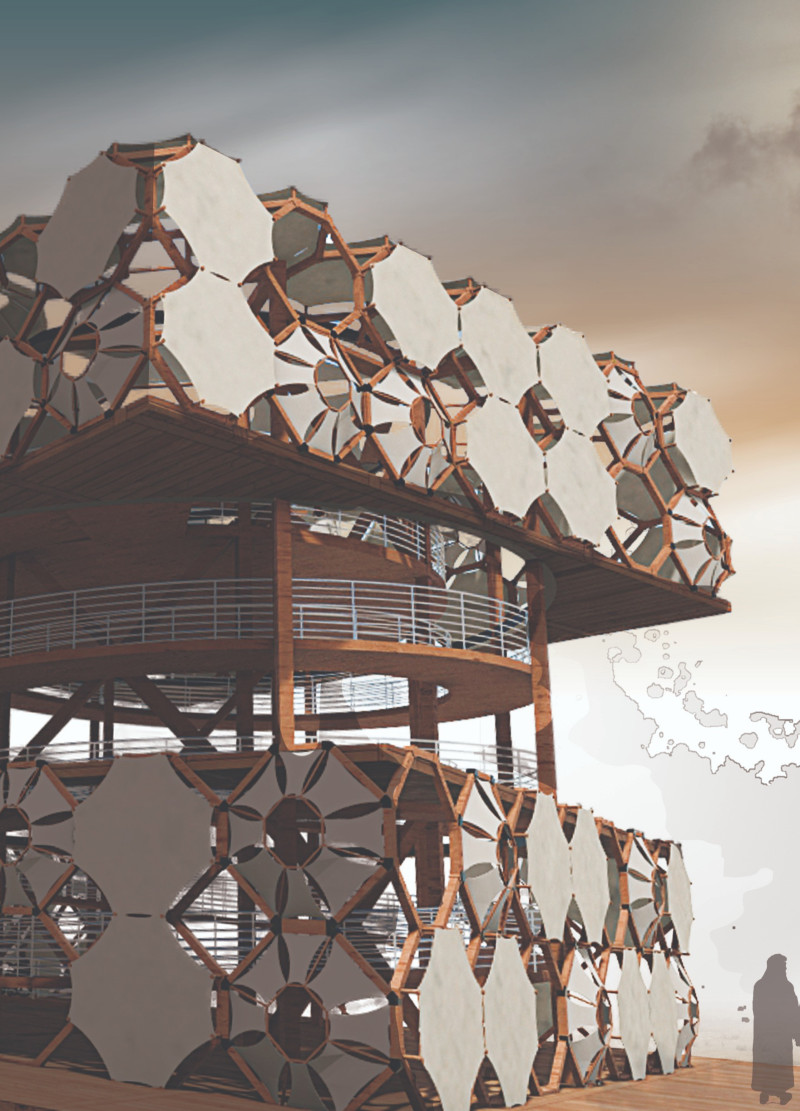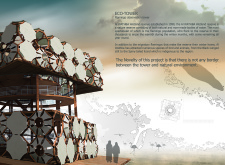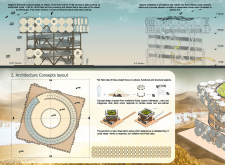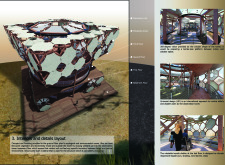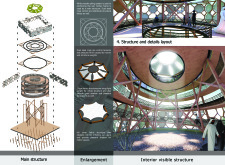5 key facts about this project
The Flamingo Observation Tower at Al Wathba Wetland Reserve is located in a significant ecological area in the United Arab Emirates. It serves as a place for education and wildlife observation, mainly focusing on the large populations of migrating flamingos that visit the site. The design emphasizes the idea of bringing together the built environment and nature, allowing for a strong connection between visitors and the wetland ecosystem.
Architectural Concept
The intention behind the design is to create a space where the boundaries between the tower and its natural surroundings are almost invisible. The structure rises to nearly 12 meters, featuring multiple levels that offer varying perspectives of the landscape. Each level has a specific purpose, encouraging visitors to explore and engage with the beauty of the wetlands while enjoying views that change with elevation.
Materiality and Aesthetic
The lower levels of the tower utilize a light covering of white tents, providing shelter from the elements while enhancing the overall look of the space. The main material used in construction is wood, which supports sustainability and connects the structure to the natural environment. Together, these materials create an inviting atmosphere that reflects regional characteristics while serving practical needs.
Visitor Experience and Functionality
Natural ventilation is a key feature of the design, achieved through a central void that functions as a solar chimney. This approach keeps the observation areas comfortable and pleasant for guests. At the top, a rotatable observation deck provides visitors with the ability to adjust their viewpoint based on sunlight and wind. This flexibility enriches the experience, allowing for deeper connections to the surrounding nature.
Accessibility and Inclusivity
The facility is designed to be accessible to all visitors, including those with disabilities. This focus on inclusivity allows a wider range of people to experience the wetlands. The organization of spaces and amenities is carefully planned to ensure everyone can navigate the tower easily. This thoughtful approach encourages interaction with nature and enhances the educational mission of the design.
At the base of the tower, native plants are incorporated into the landscape, allowing for a gentle transition from the natural surroundings to the structure itself. This integration highlights the project's commitment to preserving the wetland ecosystem while inviting visitors to appreciate the biodiversity of the area.


